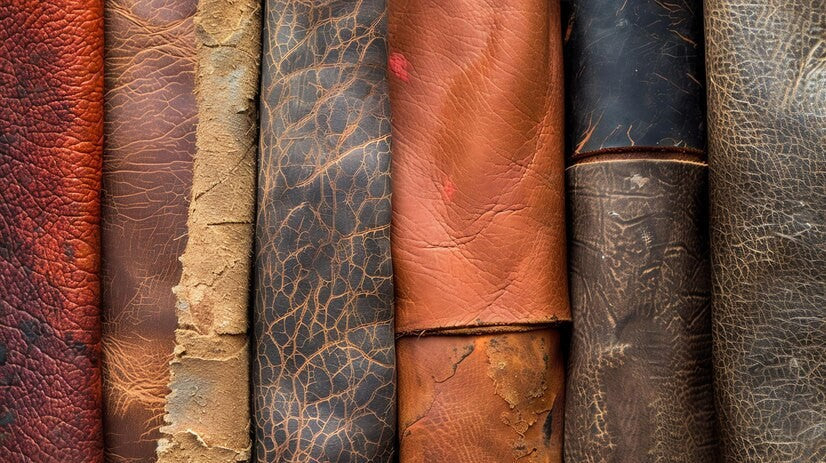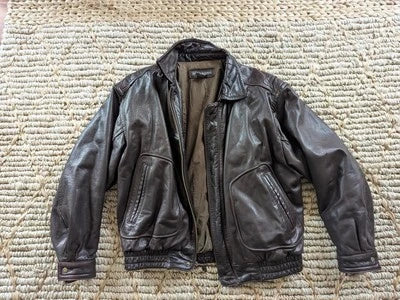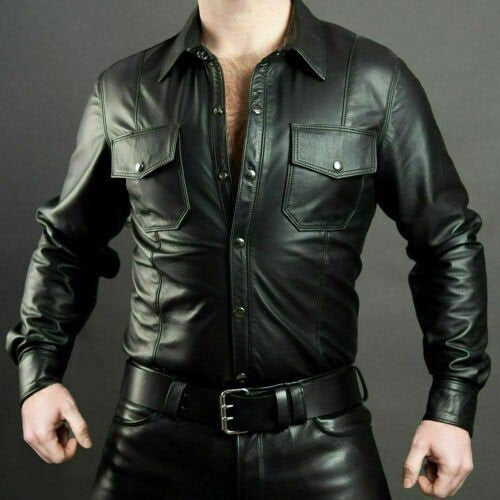Explore the Different Types of Leather: Its Quality & Uses
Leather is used in every aspect of our lives. Because it is durable, stylish and useful. There are different types of leather and every type is different from each other and has its own qualities. It is hard to figure out what they are best for if you don't have knowledge about the qualities of different types of leather.
Do you have any idea about the difference between real leather and fake leather? Are you thinking which type of leather is right for you? There are so many options in leather variety that anyone easily gets confused. But you can judge quality leather if you have proper knowledge of the different types of leather.
In this article, you will explore different types of leather. We will also discuss their qualities, uses and weaknesses. Then, you can easily identify different leathers and make confident choices whenever you are going to buy leather goods. Get ready to explore more about leather and its types!
What is Leather?
Leather is made from animal skins. This skin is known as animal hides. It is a strong material. We see many things around us that are made of leather. Animal skins and hides have undergone many processes to keep them in good shape. Leather is used in making of shoes, handbags, clothing, tools, belts and sports items.
Main differences between different types of leather
There is vast variation in leather variety. Different types of leather can be divided into distinct categories to understand the differences. These categories are:
- Quality
- Price
- Durability
- Process of animal hide
Now we explore the different types of leather by discussing these four categories.
Different types of Leather
Some of the famous leather types are listed below.

1. Full-grain Grain Leather
Full grain leather is found just under an animal's hair. It is considered the top layer of the hide. Its name is full-grain because it has a whole grain.
Process of animal hide
This type of leather is best among other types because it is not split up. It just needs to be hair removed and there is no need for buffing and sanding processes. But it also has some flaws because it was not sanded.
Quality
People like it the most because it becomes more beautiful with use. It is the only leather that becomes better with age. Another quality of full-grain leather is its smell. It has a real smell.
Durability
It is the strongest leather and also the most durable. It will not break if you poke, tear, or crack it. It is tough, lasts a long time, and does not get wet because its fibres are tightly packed together. The natural look of the leather makes it appealing.
Uses & Pricing
The leather can handle a lot of pressure. It is used to make shoes, furniture and saddles. Therefore, it looks more real and is the most expensive type of leather.
2. Top-Grain Leather
Top-grain leather has a few differences from full-grain leather. It is considered a second layer after full grain.
Process of animal hide
This leather undergoes cleaning and sanding to remove flaws. Therefore, this type of leather is easier to work with and more flexible than whole-grain leather. When things are made from it, they also go through the dying process. When the grain is removed the leather is given an artificial grain with a uniform design and a finishing coat that makes it last longer and breathe better.
Quality
This type of leather gained popularity for its softness and flexibility. This type of leather has a more natural look. However, it loses some of its water resistant quality in this process. It is cheap, soft, and bendable. But it easily gets worn out than full grain leather. It is not quite as heavy or thick as full-grain leather but it has a consistent pattern and soft touch.
Durability
It is less durable than full-grain leather. Also, it does not become softer and smoother over time.
Uses & Pricing
It is perfect for making luxury items like wallets, backpacks, and different kinds of leather shoes. It is also less costly than full-grain leather.
3. Corrected/Genuine Leather
Genuine leather, also called corrected and split leather, is very heavy and the strongest type.
Process of animal hide
It undergoes the sanding and buffing process to give it a finished look. Dyeing, pressing, embossing or spray painting are also applied to this type of leather.
Quality
If we compare it with top-grain and full-grain leather, it is not high in grade but has good qualities that make it popular among leather varieties. It has a uniform shape that can be bent. However, after processing, this leather is less able to breathe.
Durability
It is not as durable as other types because it is split leather. It is strong but it is made of different cut pieces; therefore, its durability does not last long.
Uses & Pricing
It is used to process shoes, coats and handbags. Some products claim to be made of leather, but in reality, they are made of a mix of cheap leather pieces. These types of products use colors to make an overall appearance beautiful. It is not as costly as other types of leather.
4. Bonded Leather
This is among the famous types of leather. Reconstituted leather is also known as bond leather.
Process of animal hide
It is made of small pieces of hide. A latex or polyurethane finish is required with a fiber sheet.
Quality
Different businesses use different amounts of bonded leather. This type of leather easily breaks down and cracks as compared to pure leather and its water resistance is not as good as other high quality leather.
Durability
This leather type is less durable. It can easily break if you crack or tear it.
Uses & Pricing
This leather is used for cheap home goods like furniture and accessories. If the maker gives you that information, it might be easier to tell exactly how much natural leather is in bonded leather. You will find this leather at a very low cost to buy.
5. Faux Leather

Process of animal hide
Faux leather is prepared in a lab and selected for its cost and good characteristics. It is not real leather because it is made of plastic. Fake leather needs synthetic material to be prepared. There are two main types of faux leather: PVC and polyurethane.
Quality
It is stronger than regular leather. These leathers last a long time, are bendable, and are easy to clean. However, when you touch this leather, you may feel uncomfortable.
Durability
It is not suitable for the earth's environment because it is made with petrochemicals. It is article leather but it is durable for longer use.
Uses & Pricing
The interiors of cars, cheap restaurants and medical buildings are their main markets.Vinyl leather is more cosly than faux leather.
6. Nubuck
Nubuck leather was produced in the 19th century. This type of leather hide is also famous for its genuine leather texture and silky soft touch.
Process of animal hide
Nubuck leather is made by sanding or buffing the outer layer of animal hide. That gives it a soft and velvety texture. This process enhances the leather's durability while maintaining its natural grain.
Quality
The quality of this leather type is up to the mark. This leather type combines the unique characteristics of various types of soft leather. This leather has a fine look and feel.
Durability
It is very reliable and durable because it is made up of the upper layer of animal hide.
Uses & Pricing
This leather is often used for many home accessories and bags. It is used for many leather products especially the soft leather variety. Nubuck leather is more expensive than other types of leather because of the extra processing required to make it soft.
7. Suede
The suede is also real leather. But it is less soft and thin than nubuck leather. It is very similar to nubuck leather but has key differences in a few ways.
Process of animal hide
It goes through the process of sanding, which gives it an ironic feel. It also comes from the top-grain leather layer of animal skin.
Quality
It is best among the soft leather varieties. It is smooth, flexible and soft leather. It is commonly available.
Durability
It is not as durable as Nubuck leather.
Uses & Pricing
It is mostly used for luxury items. We can also find fashion accessories such as jackets and shoes. It is less expensive than nubuck because it is made from the inner layer of animal hide, which is softer but less durable.
8. Aniline & Semi-Aniline Leather
These leathers are full grain or top grain leather.
Process of animal hide
The dying method brings out the differences in the fiber, giving a fabric a marbled look. Aniline leather is soft and does not require a finishing process while the finishing process on semi-aniline leather is thin and clear.
Quality
They are also easily damaged because they absorb water. They fade and scratch easily too. Therefore, cleaning them may also cause damage.
Durability
Semi-aniline leather has a light protective coating that makes it more durable than aniline leather while still retaining a natural look.
Uses & Pricing
It is slightly less expensive but offers better resistance to wear and tear. They are commonly used in furniture, luxury car interiors and premium leather goods like handbags and jackets.
9. Vinyl
This man-made material is polyvinyl chloride (PVC). It is not water-resistant. The back of the cloth is either a woven mesh or a fuzzy mix of polyester and cotton. It's used on boats and spa covers, as well as in cars and furniture.
Understanding of Leather Hide
The skin of animals is used to make leather hides. This process protects animal organs from the sun and other animals. How the different layers of the hide are put together determines the quality and longevity of a leather product.
The Grain Layer of a Leather Hide
The grain is the upper layer of the hide where the fibers are tightly present. This layer is revealed when the air is removed. It is known for being strong and smooth. The strongest part of the leather is the grain layer. Therefore it can handle any weather condition.
The merger of Grain and Corium
The top layer of leather meets the inner layer at the point where the grain and corium layers meet. The strong grain layer and the less thick corium layer meet at this point which improves the quality of the leather.
The Layer of Corium
Corium is found under the grain layer. It comes from collagen fibres and is not as hard and stiff as the grain layer. The corium is the strongest layer in many animal hides and is vital in leather making.
The Layer of Skin
It is made up of animal muscle and fat. This layer is not usually found in high quality leather goods. These hides are generally split to get rid of the flesh and only the top layers are used to make leather goods.
Different Quality Levels & Leather Grades
There are many ways to grade leather. These grades show how the leather was split and how the surface was worked. These differences can affect the quality and value of a leather item.
Different grades of leather quality and Raw Hide
Meat sellers grade animal skins as they are manufactured. In this way, tanners can get more accurate information about the quality of the rawhide. They will always have the tools they need to make high quality finished leather that can be used to make leather goods.
Tanners checked holes, deep cuts, scars, hairs, machine damage and uneven grain. The grading method also looks at how the brand affects the quality of the hide even if it does not happen very often.
Classifications for the Hides
The classifications for hides are as under:
Grade One Leather Hide
Grade one includes top-rated skins. The outer skin does not have any major flaws, holes, or cuts. Almost 80% of the clothes that are sent to tanners are of the best quality.
Grade two Leather Hide
Two to four holes are acceptable in this grade but they have to be spread out properly so that the piece can be cut without losing a large part. These holes should not be bigger than 5 inches and flaws must not be bigger than a square foot.
Grade Three Leather Hide
Five or more holes and cuts are acceptable in this grade, but they should be straight. Cutting that off is easy and won't waste too much hide. It's okay to make one hole or cut bigger than 6 inches. It should be usable and cover at least half of the hide's surface area. Sometimes, Tanners do not buy grade 3 hides because of their characteristics.
Grade Four of Leather Hide
These hides do not fall into the category of all other grades. They are very low quality. Raw animal hides don't go to tanners. They go to a different market where they can be useful.
Forms of Leather Slicing

When choosing where to cut the different kinds of leather for a project, there is usually a lot of finished leather to choose from. Compared to the animal's body, some parts of the hide will be slightly better quality and easier to work with than others.
There are different types of leather that depend on the forms of leather cutting. Understanding different cuts can help you choose the best one for your project and the performance qualities you want the result to have.
Whole leather piece
Whole leather hide means the skin of an animal that has been taken off and the hide has been dyed. You can choose leather ranging from the softest to the largest and most rigid. This is because it comprises scraps from all the related cuts. The leather thickness and weight will depend on the full hide.
A Cut in the Leather on the Side
In this form of leather slicing, a cut is made on the side of the leather. This means that different kinds of leather come in many different textures and thicknesses because they comprise at least some parts of all the cuts that go with them.
Leather upper back
This shoulder cut is the area of the animal's shoulders. This area is strong but can also be bent. It is used to make tools.
Both shoulders Leather strap
This leather hide is also the part of animal's shoulders. This is the area where a lot of hair grows. If you touch that area, it gives a hard feel but it is soft and flexible. Shoulder cuts are good for working.
How to Spot Fake Leather
There are also many leather products that claim to be real but they are fake. Many copied leather products are made of split or bonded leather. There are a number of ways you can spot them as fake.
- Real leather has texture with natural imperfections on the other hand, fake leather has a uniform and smooth surface because it is machine-made.
- Real leather absorbs water but fake leather does not which causes different stains on it.
- Genuine leather has a different smell but fake leather has smells like plastic or other chemicals.
- Real leather edges are rough and fake leather edges are smooth.
- Real leather has natural wrinkles and stretches on the other hand, fake leather remains unchanged when stretched.
Conclusion
As you are an expert in identifying different types of leather, you can easily judge the quality of leather. If you mostly buy leather products the knowledge that we share in this article is very valuable. Every leather has unique qualities, common uses and limitations. You can choose the leather that best suits your needs and budget by reading this article. This knowledge ensures you are investing in high quality leather whether it is for fashion, leather furniture or any other accessories.
FAQs
Define full grain leather?
It is the upper layer of animal hides. It is the most expensive type of leather and it is popular for its durability and natural look.
What is bonded leather used for?
Bonded leather is made from leather scraps. It is used for furniture, bookbinding and accessories due to its lower cost.
Is faux leather durable?
Faux leather is durable but less breathable. It is used in car interiors and many other home products.
What is the difference between nubuck and suede?
Both have similar characteristics. Suede and nubuck are made from younger animal hide. Suede is thin and soft but nubuck has a fine texture and is more durable.






